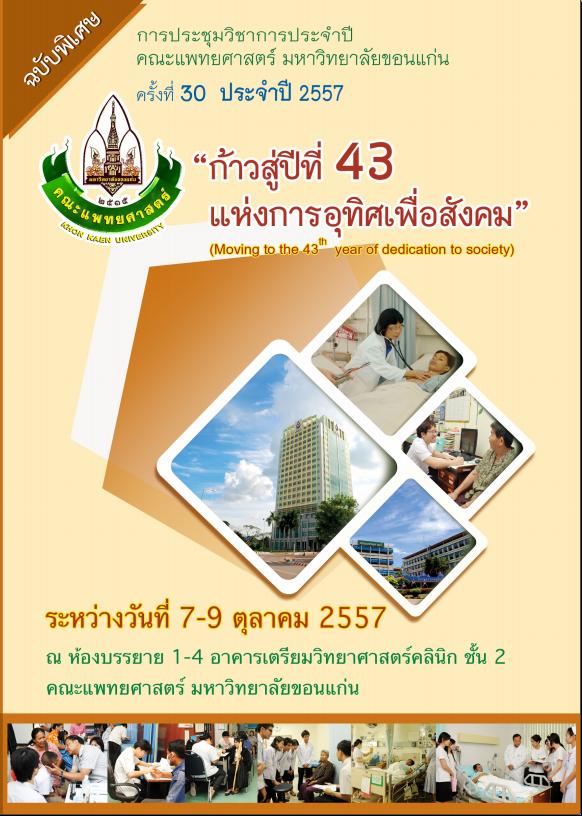Symposium “ อนุมูลอิสระและสารต้านออกซิเดชันในการเกิดและการป้องกันโรค และเสริมสุขภาพ”
Keywords:
Reactive oxygen species, Free radical, Cellular signal transduction, Nrf2, Antioxidant, Cytoprotection, PhytochemicalAbstract
All aerobic organisms are evolved with cellular respiration using molecular oxygen as final electron acceptor, where mitochondria are the powerhouse generating high energy phosphate compounds, ATP. The inevitable electron leakage from the electron transport chain in mitochondria is one of major sources of reactive oxygen species (ROS) formed in the cell. ROS is also generated by other systems including NADPH oxidases (NOXs), xanthine oxidases (dehydrogenase) and etc. The ROS formation is not simply the waste products from cellular metabolism, but in many conditions it is purposefully formed to serve many special functions, for instances, for defending invading microorganisms in phagocytic cells, and importantly serving as intracellular signaling molecules. In contrast, uncontrolled formation of ROS produces deleterious effects on biomolecules such as lipid peroxidation, protein oxidation and DNA damage which lead to cell dysfunction and cell death. A number of diseases are associated with oxidative stress, such as, cardiovascular disease, diabetes, metabolic syndrome, ageing and various neurodegenerative disorder and cancer. The double edged roles of ROS are finely modulated by cellular antioxidant systems, where Nrf2-ARE (nuclear factor erythroid 2-related factor 2 – antioxidant response element) signaling pathway plays prominent role in regulating ROS and redox homeostasis. Nrf2-ARE signaling functions as stress sensor and responses by upregulation of variety of antioxidant, cytoprotective and xenobiotic metabolizing genes as an adaptive survival response. A number of phytochemical products, for instances, curcumin, sulforaphane, luteolin and isothiocyanates, exert cardioprotective and cancer chemopreventive effects through activation of Nrf2-ARE system. On the other hand, not only normal cells employ Nrf2-ARE to protect themselves, some cancer cells also evolve to exploit this system for their own cytoprotection and their very existence of immortality. Modulation of cellular ROS and redox homeostasis is a current fascinating research area where it involves with numerous health aspectsDownloads
How to Cite
1.
Kukongviriyapan V, Sattayasai J, Kukongviriyapan U, Panich U. Symposium “ อนุมูลอิสระและสารต้านออกซิเดชันในการเกิดและการป้องกันโรค และเสริมสุขภาพ”. SRIMEDJ [internet]. 2014 Nov. 15 [cited 2025 Dec. 18];29(4):45-8. available from: https://li01.tci-thaijo.org/index.php/SRIMEDJ/article/view/23622
Issue
Section
บทความ




